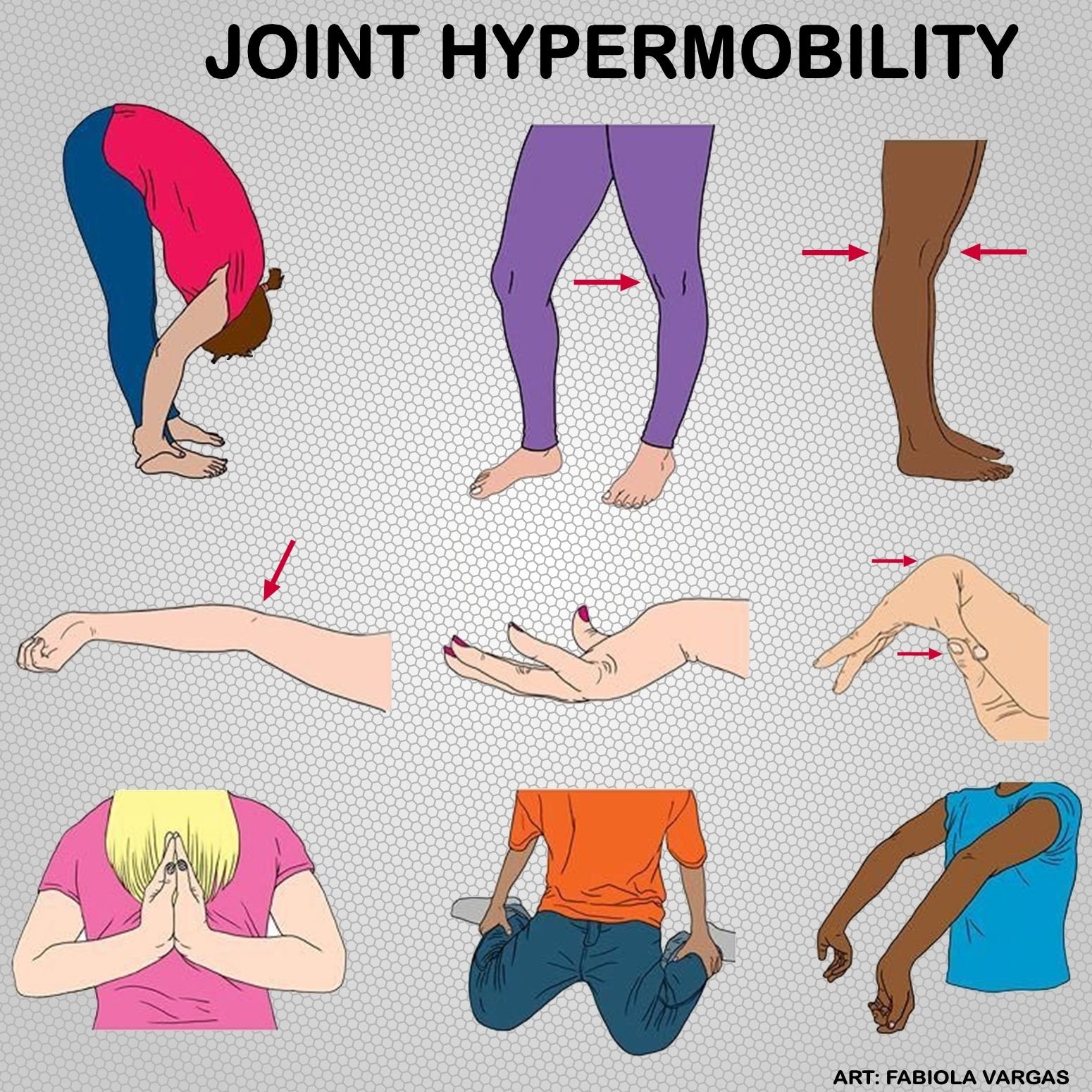What is Hypermobility? - written by Tanya Houpt
For the past two years, Tanya has been working with hypermobile clients, particularly those with Hypermobile Ehlers Danlos Syndrome (hEDS). She recently completed a course specifically for hypermobility and hEDS, the Integral Movement Method, (IMM), arguably the only one in New Zealand to do so. If you have ever wondered if you might be hypermobile then read on…
Are you Hypermobile, what is Joint Hypermobility and Instability?
Joint hypermobility means that a person’s joints have a greater range of motion than is expected or usual. Some people have joint hypermobility that does not cause them pain or other issues. However, some people with joint hypermobility also have joint instability. Joint instability occurs when the bones of a joint aren’t held in place securely. This can lead to joint subluxations, dislocations, sprains, and other injuries. Joint instability can cause both acute and chronic pain and interfere with daily life.
How do you know if you are hypermobile?
Are you super flexi … can you do ‘party tricks’ with your body!
Get a lot of stiffness and pain in joints and muscles
Sprain and strain joints often
Feel your joints popping or moving out of placement
Get tired, even after resting
Have poor balance or co-ordination
Have early onset of arthritis
What is EDS?
The Ehlers-Danlos syndromes are a group of 13 heritable connective tissue disorders. The conditions are caused by genetic changes that affect connective tissue, which is everywhere in the body. This collagen-based defect of hypermobility can affect each person differently. Each type of EDS has its own set of features with distinct diagnostic criteria. Some features are seen across all types of EDS, including joint hypermobility, skin hyperextensibility, and tissue fragility.
Symptoms of hEDS
Joint hypermobility
Loose, unstable joints that dislocate easily
Joint pain, clicking joints
Fatigue
Bruises easily
Digestive issues
POTs, postural orthostatic tachycardia syndrome
Internal organ issues
Migraines
What is the Integral Movement Method (IMM)?
The IMM method is unique and powerful, being quite different to mainstream mechanical movement therapy based on building awareness through movement. When in pain and or stressed, we respond by guarding and protecting our minds and bodies. IMM is a no pain, no strain strategy, allowing the body to release stress and tension, replacing it with a calm nervous system and efficient movement patterns. Pain and discomfort, often stuck in the body for years, can often disappear. This method also has excellent results for those experiencing PTSD, mental health issues, and chronic pain.
IMM teaches six important principles of living within a hypermobile body:
Breath
Relaxation
Proprioception (including both nociception and interception)
Stability (vs mobility)
Balance
Posture
The overall outcome is to use movement to unwind, explore, assess, refine, and reflect on how your body moves and serves you best.
Please contact Tanya if you are interested in working with her.


